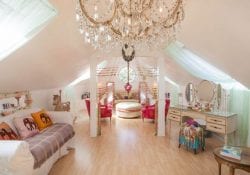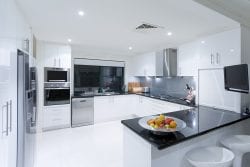Lighting in your home a few simple tricks to make you home a brighter space…
June 22, 2021 12:16 pm
Lighting

Natural light in a home is always better than artificial light. It bathes your room in a rich full spectrum hue that light bulbs can only hope to duplicate and it increases your body’s feel-good serotonin levels. Best of all, natural light will not come due at the end of the month with the power bill. It’s free.
Many homes were not built with natural light in mind. Short of picking up your house and turning it in the direction of the sun—or altogether relocating it to a sunnier location—there are a few remodel projects you can do that significantly increase interior natural light.
Paint Your Eaves White
The overhangs created by your roof are eaves or soffits. Either they are left as open eaves or they are covered up with a horizontal soffit.
In any case, this section reflects natural light and sends it into your home. Painting your eaves white is one little-known way to boost natural light in every room of your home.
Use Lighter, Brighter Interior Wall and Ceiling Paints
Interior wall color is the number one way to reflect natural light back into your room. Light Reflectance Value, or LRV, can range from near to 100-percent for pure white down to close to 0-percent for black. All colors in-between will have greater or lesser LRV.
Nothing is brighter than white. If you really don’t like white but really want more light, look into whites with some other color tones; white comes in a huge range of subtly different shades.
Most ceilings are white for a reason: White reflects light. And since ceilings often go unnoticed when surveying a room’s decor, there’s no design penalty for going with white. Flat white is preferred over glossier sheens because a matte finish reduces glare, and ceilings don’t need the washability of glossier paint because they don’t get touched regularly like walls and trim do.
Kitchen and Bathroom
It always pays to install reflective surfaces in these locations, they are generally easier to clean. Glass tiles are the next best thing to installing mirrors in your kitchen alternatively install highly glossy ceramic tiles for a nearly equal reflective effect. Compare low-reflection backsplash options such as cement or barn board against even an ordinary white subway tile backsplash. In terms of light reflection, the subway tile is superior to many other materials. And at just a few dollars per square foot, it is far cheaper, too.
When sunlight reflects on a chandelier, it sends more light into the room. And the chandelier doesn’t even need to be turned on for this to happen.
Think in terms of shiny, glossy, and reflective room elements: mirrors, sconces, and shiny cabinet pulls.
Categorised in: Home Renovations, Uncategorized
This post was written by Team CORE



